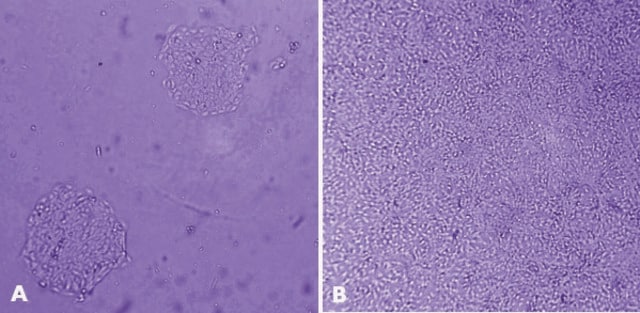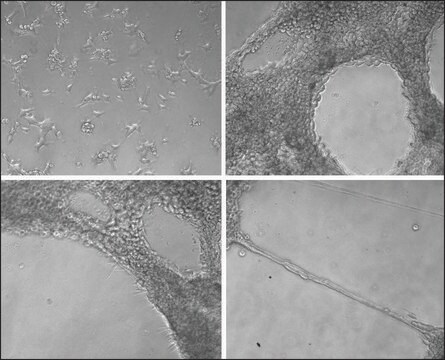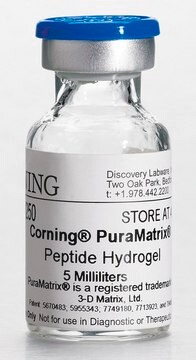HYS020
HyStem® Cell Culture Scaffold Kit
For 7.5 mL of hydrogel scaffold solution
Synonym(s):
Cell Culture Scaffold, HyStem Culture Kit
About This Item
Recommended Products
Quality Level
storage temp.
−20°C
Looking for similar products? Visit Product Comparison Guide
Application
Features and Benefits
- Customizable - each distinct cell type in a multicellular organism has its own unique microenvironment. Hystem offers the flexibility to tailor the environments of cultured cells to mimic their in vivo counterparts and optimize proliferation and differentiation.
- Animal Component Free - As a synthetic Hyaluronic acid-based matrix, Hystem offers complete control of the cellular environment. All components are well-characterized, consistent, and derived from non-animal sources
- Biologically accurate - Rich in hyaluronic acid, the Hystem hydrogel closely mimics the complex three dimensional cellular environments found in life, providing an optimal environment for culturing your cells.
Hystem is recommended for in vivo experimentation.
Hystem offers a minimal number of cell attachment sites. If desired, researchers may incorporate attachment factors of their choice.
Legal Information
related product
Signal Word
Danger
Hazard Statements
Precautionary Statements
Hazard Classifications
Eye Dam. 1 - Skin Irrit. 2 - Skin Sens. 1
Storage Class Code
10 - Combustible liquids
WGK
WGK 3
Flash Point(F)
Not applicable
Flash Point(C)
Not applicable
Choose from one of the most recent versions:
Already Own This Product?
Find documentation for the products that you have recently purchased in the Document Library.
Articles
Hystem 3D hydrogels are based on hyaluronic acid, a major component of the extracellular matrix. 3D cell culture can be done using Hystem hydrogels.
Hyaluronan is a major component of the extracellular matrix. It’s the simplest glycosaminoglycan, and it plays several biological roles.
Cell delivery vehicle are components that can be associated with cells and that allow transplantation in human or animals hosts. These can be natural or synthetic components that will form a gel, embedding the cells.
Hydrogela are the most widely used systems for 3D cell culture. Learn more about this technology (what are hydrogels? How to chose?)
Our team of scientists has experience in all areas of research including Life Science, Material Science, Chemical Synthesis, Chromatography, Analytical and many others.
Contact Technical Service









